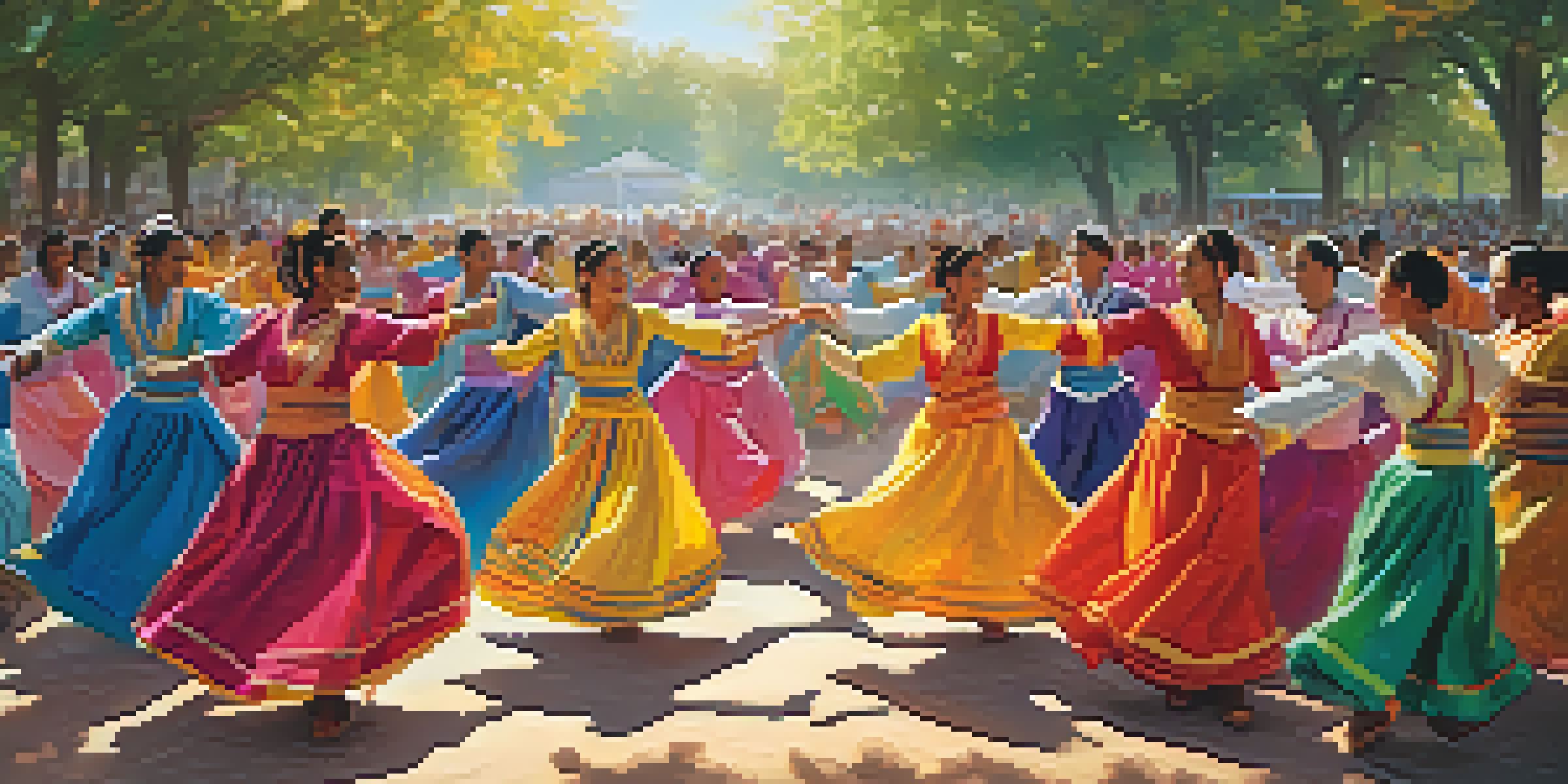Dance as a Universal Language for Global Health Awareness

Understanding Dance as a Global Connector
Dance transcends barriers of language, making it a unique form of communication. From the rhythmic beats of African tribal dances to the classical elegance of ballet, each style tells a story. This universality allows people from diverse backgrounds to connect and share experiences, fostering a sense of community. In a world often divided by differences, dance serves as a reminder of our shared humanity.
The Health Benefits of Dance
Engaging in dance is not just about moving to the music; it offers substantial health benefits. Studies have shown that regular dancing can improve cardiovascular health, boost mental well-being, and enhance flexibility. For instance, salsa dancing can raise your heart rate while providing a fun way to socialize. By promoting physical activity, dance plays a crucial role in combating global health issues like obesity and depression.
Dance Bridges Cultural Divides
Dance transcends language barriers, creating connections among diverse cultures and fostering a sense of community.
Cultural Significance of Dance in Health Awareness
Many cultures integrate dance into their health rituals, making it a key element in promoting well-being. For example, traditional healing dances in Native American cultures are believed to restore balance and health. Similarly, in India, folk dances often celebrate health festivals, raising awareness about various health issues. This cultural integration illustrates how dance can be a powerful tool in public health education.
Dance Initiatives Promoting Global Health
Various organizations are harnessing the power of dance to promote health awareness on a global scale. Initiatives like Dance for Health and Dancing for Life encourage communities to participate in dance as a means to address health challenges. These programs often include workshops, classes, and performances that educate participants about health issues while enjoying the benefits of dance. Such initiatives showcase how collective movement can lead to significant health outcomes.
Health Benefits of Dance
Regular dancing enhances physical health, boosts mental well-being, and plays a vital role in combating issues like obesity and depression.
Dance Therapy: Healing Through Movement
Dance therapy is a growing field that uses movement to promote emotional and physical healing. Practitioners believe that expressing feelings through dance can help individuals cope with trauma, anxiety, and depression. For example, a recent study highlighted how dance therapy helped cancer patients improve their emotional well-being. By combining art with health, dance therapy exemplifies how movement can serve as a healing medium.
Global Dance Events Raising Health Awareness
Events like World Dance Day and National Dance Week bring communities together to celebrate dance while raising awareness about health issues. These events often feature workshops, performances, and discussions focused on health education. For instance, a recent World Dance Day event included sessions on mental health and wellness, illustrating how dance can spark vital conversations. Such gatherings not only promote dance but also create platforms for health advocacy.
Social Media Amplifies Dance Impact
Platforms like Instagram and TikTok enable dancers to raise health awareness through engaging choreography and viral challenges.
The Role of Social Media in Dance and Health Awareness
Social media has revolutionized how dance is shared and experienced globally, amplifying health messages. Platforms like Instagram and TikTok allow dancers and health advocates to reach wider audiences, spreading awareness about health issues through creative choreography. Viral dance challenges often incorporate health themes, making the information engaging and accessible. This digital age enables a unique blend of dance and health promotion that resonates with younger generations.
Conclusion: Dance as a Pathway to Health Awareness
In conclusion, dance emerges as a universal language that not only entertains but also educates and heals. Its ability to connect people, promote health, and foster cultural understanding makes it a powerful tool in global health initiatives. By embracing dance, we open the door to vibrant communities committed to health and well-being. As we continue to explore this dynamic intersection, the rhythm of dance will undoubtedly play a crucial role in shaping a healthier world.